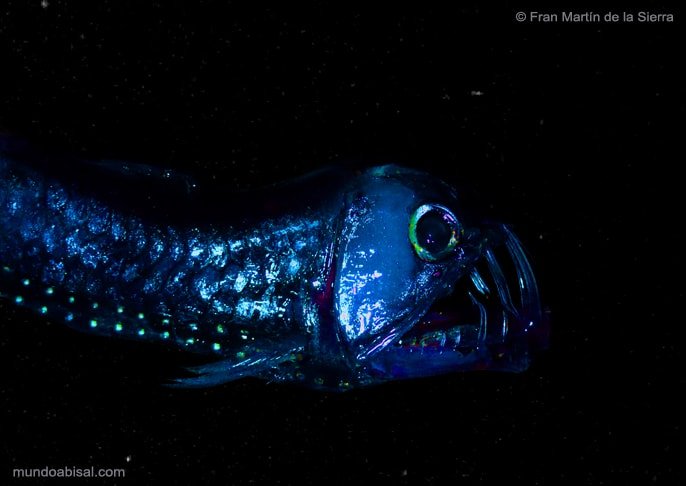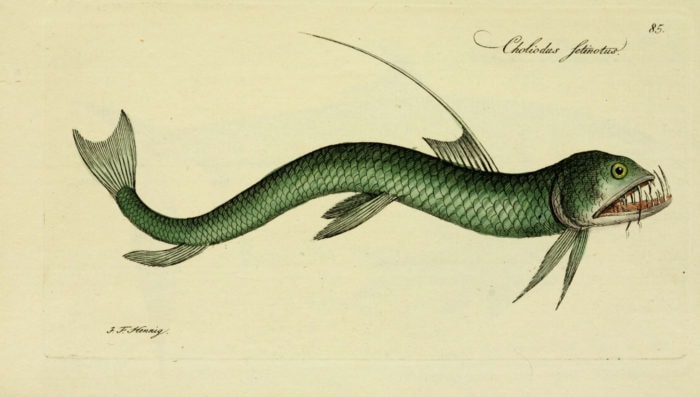The glass-fanged viperfish is nightmare material

Bec Crew
Bec Crew

LOT OF THINGS lurking in the deep sea are intimidating and otherworldly, but nothing quite says Xenomorphic nightmare fuel quite like the glass-fanged viperfish (Chauliodus sloani).
And how’s this for a horrifying factoid – this predatory viperfish has the biggest teeth of any fish on Earth, relative to head size, and it’s spent the past 40 million years perfecting its hunting skills in near-complete darkness.
Those transparent, needle-like fangs are so long, they don’t even fit inside the viperfish’s head. They’re used to impale prey as the viperfish swims towards them at high speeds.
The teeth can also lock together to form a ‘prison’, into which live prey such as sweet-looking lanternfish can be ensnared.
Such large fangs require some pretty creative jaw work – the glass-fanged viperfish can unhinge its jaws, and open its mouth to a 90-degree angle, clearing just enough room to swallow prey up to 63 percent of its own body size.
Not quite black swallower material, but still seriously impressive.
Found in tropical and temperate waters throughout the world, including all around the coast of Australia, particularly in the southeast, the glass-fanged viperfish keeps to depths of 200 to 1,000 metres, where temperatures dip to 4 or 5 degrees.
Also known as Sloane’s viperfish, its fangs aren’t its only amazing quality. Check out the two rows of bioluminescent spots that run along its undersides:

(Image credit: Fran Martín de la Sierra https://abyssalworld.weebly.com)
Those are called photophores, and they are thought to be the deadliest tool in the glass-fanged viperfish’s arsenal.
These highly specialised light organs contain a pigment coat, a lens, and a reflector, which allows them to attract prey from above.
It’s also suspected that the tiny ‘barbel’ on the end of its slender dorsal ray fin is covered in these bioluminescent organs. It’s thought that it can wave this in front of its face to lure prey right into its awaiting jaws:

(Image credit: Biodiversity Heritage Library/Flickr)
Not surprisingly, viperfish aren’t the kind of fish that you’re likely to ever encounter in your lifetime, but fortunately for us, the legends from the Nautilus Expedition filmed one in the wild:
Let’s just say, Greg, you had one job!




